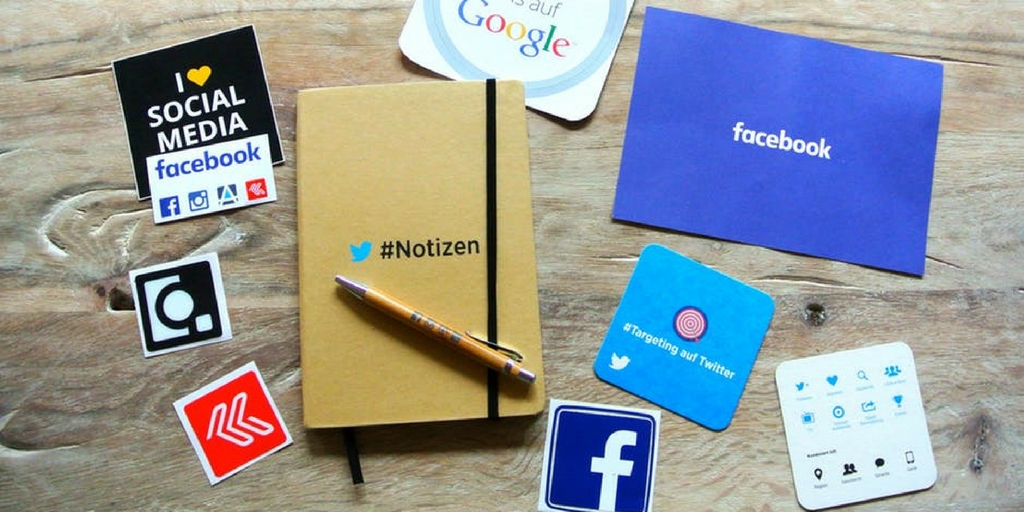
by Fronetics | Aug 29, 2017 | Blog, Content Marketing, Current Events, Marketing, Social Media
When it comes to social media news in August 2017, the words of Kanye West, “stronger, better, faster, stronger,” have never been truer.
August has seen a continued push to get more information to more people in real time. Pinterest is introducing mobile ads. YouTube is adding sharing and chat features to the app. Google is developing new software to rival Snapchat. And, of course, the social media giant Facebook is always working on new improvements to dominate its competitors.
Facebook Tests Custom Audiences Based on Interactions with Event Pages
Brands will soon have the ability to create custom audience groups based on visitors’ interactions with the brand’s event pages. Facebook has confirmed that brands will be able to choose custom audiences made up of users who responded to any event on their pages or to specific events, and they will also be able to include users who RSVPed as going, interested, or both. Though only in its testing phase, these initial companies have been able to create audience groups based on interactions within the past 180 days.
Google Developing Rival to Snapchat Discover Feature
Back in 2016, Snapchat introduced ‘Discover,’ which allowed users to view news in the form of Snapchat Stories. At the time, this new technology allowed social media to combine news and television in short videos. Now Google wants a piece of the action. Google is working to allow publishers the ability to create media-oriented content. “The new publisher technology, called ‘Stamp,’ represents an escalation in the competition between tech platforms for publisher partnerships and access to media content, which they need to drive user engagement,” writes Erik Sass for Media Post.
Pinterest Rolls Out Mobile Video Ads to All Advertisers
Initially introduced a year ago to a limited amount of Pinterest advertisers, now all advertisers will have the ability to create mobile video ads. Using auto-play, the new type of promoted videos will begin playing as soon as users scroll across a brand’s feed and will also auto-play in Pinterest’s search results. Jenny Chiu, head of partnerships at Pinterest, said in a blog post, “Your Promoted Video sparks into action the moment a Pinner scrolls across it in their feed — no need to hit play. They can just sit back and watch your video unfold. And unlike on other platforms, where ads interrupt people as they’re trying to enjoy posts from friends, on Pinterest, people are actually looking for videos that inspire them to give ideas a try.”
Twitter Tests New Feature that Allows Brands to Automate Their Promotional Tweets
Twitter is in the initial testing of having brands pay ($99) to have their tweets automatically promoted on its app. Brands can tweet as they normally would, and the social network will automatically promote some of those tweets, but brands cannot customize which tweets are promoted. Twitter will create bi-weekly reports that will include information on audience insights, user growth and new user engagement. Companies were able to sign up on Twitter’s homepage to try to land a spot in the beta testing, which is now completely full. Stay tuned to see if Twitter rolls out this new feature to all users.
LinkedIn Rolls Out Quick Access to Samsung Users
LinkedIn and Samsung have teamed up to create the ultimate user experience. Now Samsung Galaxy S8 and S8+ owners can have access to LinkedIn’s content and calendar experience. Using Bixby, Samsung’s digital assistant, users can easily access LinkedIn’s Trending Storylines that include top news stories and scheduling details through My Schedule notifications.
YouTube Adds Chat and Sharing Features to Mobile App
YouTube has been working on ways to make sharing videos easier than ever. With the newest app features, users can share videos directly through the mobile app, as well as chat with other viewers in real time. YouTube announced on its blog, “Not only can you share and receive videos in the app, you can also chat about them right on YouTube, reply with another video, invite others to the conversation, and more. We think it’ll make sharing easier, faster and more fun on your phone. And if you want to continue sharing videos through other apps, you can still do that too.”
Related posts:

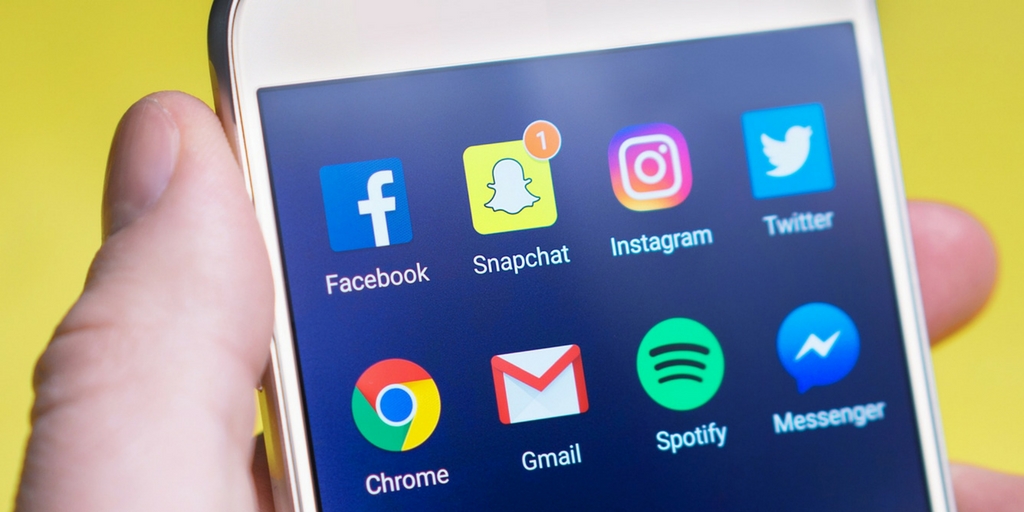
by Fronetics | Jul 20, 2017 | Blog, Content Marketing, Marketing, Social Media
Recent surveys show video platforms are the next big focus for marketers in terms of content distribution channels.
Social media marketing can seem a bit like keeping up with the Joneses. Which content distribution channels are your competitors using? Where are they getting the most engagement? How often are they posting and when?
We’re big advocates of social benchmarking against your competitors. But, just as much, we are always thinking ahead, trying to figure out where the industry is going next. It’s important to get ahead of the trends so that you can be right there leading the pack.
The State of Inbound has been tracking global marketing and sales trends for the last eight years, with a particular focus on inbound marketing. (Content marketing is a form of inbound marketing.) The 2017 survey included more than 6,300 professionals at from 141 countries, so it offers a very comprehensive view of current trends in content marketing.
One part of the survey of particular interest involves which distribution channels marketers are planning to invest in next. It gives us an idea of where companies will be putting their time and money in terms of social media marketing. Let’s take a look at the results.
Content distribution channel investment
The more than 6,300 marketing professionals surveyed answered the following question: “What content distribution channels do you plan to add to your marketing efforts in the next 12 months?” The chart below shows responses from 2016 and 2017 surveys for comparison.
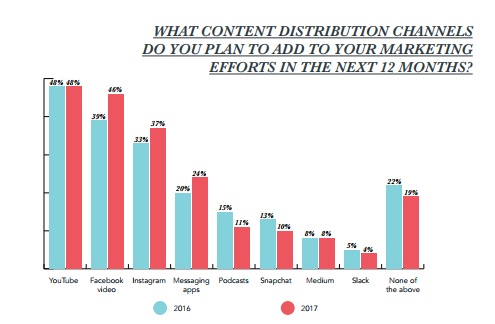
Source: State of Inbound 2017
Marketers will maintain or increase their investment on YouTube and Facebook video — focus on the latter jumping a significant 7% over 2016. Interest in Instagram and messaging apps has also grown significantly over the last year, while marketers’ investment in podcasts, Snapchat, and Slack has decreased.
I also want to note quickly that investment in Medium has remained steady at 8%. I plan to write more about Medium as an opportunity for supply chain and logistics businesses in the near future, so stay tuned!
Misaligned priorities
Another noteworthy aspect of this survey question is how respondents at various levels of the corporate ladder answered. Do the people who set company goals have the same priorities as those tasked with social media management and content distribution on a daily basis? Of course not! Take a look.
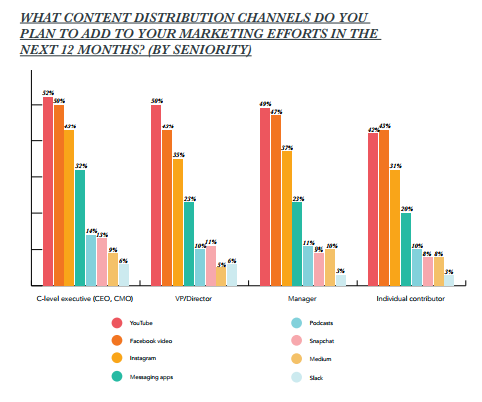
Source: State of Inbound 2017
Broken down by respondents’ roles, the data shows a division in the priorities of C-level executives versus individual contributors. Executives show a higher preference to expand to new channels of distribution such as messaging apps. The individual contributors responsible for the day-to-day oversight, however, offer a more conservative approach, favoring more tried-and-true distribution channels.
It is also interesting to note that individual contributors consider Facebook video a top priority slightly over YouTube, while executives, directors, and managers uniformly prefer YouTube.
Our takeaway: Video, video video
Across the board, companies are turning their content distribution focus to video platforms, and the supply chain should be, too. If you haven’t heard me say it before, I’ll tell you now: Yes, video can work for the supply chain.
Why? In a nutshell, YouTube reaches more adults ages 18-34 in the U.S. than any cable network. Users browse the platform for entertainment purposes, but also for tips, information, and ideas. And anywhere people are seeking solutions, businesses should be providing answers.
Live video, too, is a trend that is not going away anytime soon. According to the 2017 Social Media Marketing Industry Report, 61% of marketers plan on using live video services such as Facebook Live and Periscope, and 69% want to learn more about live video.
Live video helps businesses promote transparency, good communication, and relatability. It’s something that will do your business a world of good in the supply chain and logistics industries.
Related posts:


by Fronetics | May 25, 2017 | Blog, Content Marketing, Marketing, Social Media
In this month’s social media news, Facebook cracks down on misleading content, while Snapchat and Pinterest appeal to advertisers.
If you sense that the competition between social media networks for users and advertisers is heating up, you’re not alone. This month, Facebook continues its quest to cut down on the sharing of false information and misleading content while launching better lead-tracking tools for ads. Twitter moves to protect user privacy by updating its terms and conditions. And exciting new technology launches at Google, Pinterest, and Snapchat.
Here’s the latest social media news for the supply chain.
Facebook reduces links to low-quality web pages and misleading ads
After months refining its News Feed algorithm and ads, Facebook announced another update to weed out false information and spam in a blog post: “We reviewed hundreds of thousands of web pages linked from Facebook to identify those that contain little substantive content and have a large number of disruptive, shocking or malicious ads. We then used artificial intelligence to understand whether new web pages shared on Facebook have similar characteristics. So if we determine a post might link to these types of low-quality web pages, it may show up lower in people’s feeds and may not be eligible to be an ad. This way people can see fewer misleading posts and more informative posts.”
As changes roll out gradually in the coming months, publishers with high-quality landing page experiences might notice an increase in traffic, while those with negative experiences will see a decline. Businesses looking to improve their web experiences can read the full Facebook Business post and visit the Help Center for tips.
See also:
Twitter updates opt-out process
Twitter is helping users weed out irrelevant personalized ads and protect their privacy. The Twitter website tag will now “rely on the Digital Advertising Alliance’s consumer choice tool and other ways to opt-out described here.” Site owners must update the privacy policy to notify their users of this new opt-out process.
Google unveils Google Lens
Google’s latest product, Google Lens, will leverage computer vision and AI technology to enable smartphone cameras to not only see, but to understand what it’s seeing to help users. For example, if you take a photo of the login information on the sticker on your router, the lens will identify the action by offering to connect you to the Wi-Fi, using the photo of the network name and password.
Snapchat reaches 166 million daily active users, rolls out limitless snaps, adds ad lenses and geofilters
In its first quarterly earnings report since going public in March, Snap Inc. announced that its daily active user (DAUs) base grew to 166 million in Q1 2017. Additionally, the Snapchat app released four new creative tools:
- Infinity timer setting: This option eliminates the 10-second time limit and allows your videos to play as long as you like. The snap then erases when closed.
- Looping: Users can choose to have their photos or videos loop indefinitely until viewers close the snap.
- Magic eraser: Users can select and remove objects from snaps.
- Emoji drawings: Users can now draw with emojis using the pen tool.
Ad partners also have three new creative tools at their disposal:
- World Lenses are an extension on Snapchat’s Sponsored Lens, which already let advertisers turn users’ selfies into ads. Sponsored World Lenses allow advertisers to create content for the rest of the photo beyond the face, like floating 2-D or 3-D objects.
- Audience Lenses let advertisers buy a guaranteed number of Lens impressions for a specific audience. This includes those that are targeted by demographics like age and gender, as well as those identified as falling in one of Snapchat’s Lifestyle categories.
- Smart Geofilters automatically add location information or other real-time information to a nationwide or chain Geofilter. This ad type allows users to activate branded overlays that appear when they swipe left or right on the camera.
Pinterest applies visual search technology to ads
Pinterest announced that it’s now leveraging the technology behind its newly released visual discovery tools — Shop the Look, Instant Ideas and Lens beta — to make Promoted Pins even more effective. Machine learning allows the platform to identify what is most relevant to a user based on the images s/he pins. For example, if the user pins images of blue, formal, A-line dresses, Pinterest will begin to show similar images in that user’s feed. The same technology will now be applied to ad content. “We help people find your ads in the very same way, connecting people to products they like the looks of, but don’t quite have the vocabulary to describe. As a result, your ads feel more relevant, and they can reach audiences you may not have considered before.”
Not sure how to use Pinterest’s advertising tools? Check out these 4 free webinars for businesses.
Facebook enables targeting to users who have saved posts, adds offline conversion solution for lead ads
Facebook page admins can now see the number of saves for each page post, then “create custom audiences of people who have saved [their] posts and retarget them with different content.”
Additionally, Facebook is now allowing businesses to connect their CRM, point of sale, or even their call-center systems to their Facebook ad campaigns to help advertisers monitor which of their lead ads drive those business results. This is huge for advertisers who have been trying to attribute conversions from lead ads based on offline activity.
Ellen, Ludacris, Katy Perry and more to star on YouTube’s exclusive new shows
YouTube announced plans to launch seven new “star-studded” shows, exclusively premiering on the video platform “beginning later this year.” Stars include Kevin Hart, Rhett and Link, Ellen DeGeneres, Katy Perry, the Slow Mo Guys, Demi Lovato, and Ludacris. The shows will be fully ad-supported and thus free to watch.
Facebook releases “Latest Conversations” feature
Facebook’s new Latest Conversations feature shows timely topics that many members across the network are discussing in its search results. It appears in its own section of the search results and includes a running count of how many people are talking about the topic at the moment. This feature is currently only available on the mobile app.
Related posts:

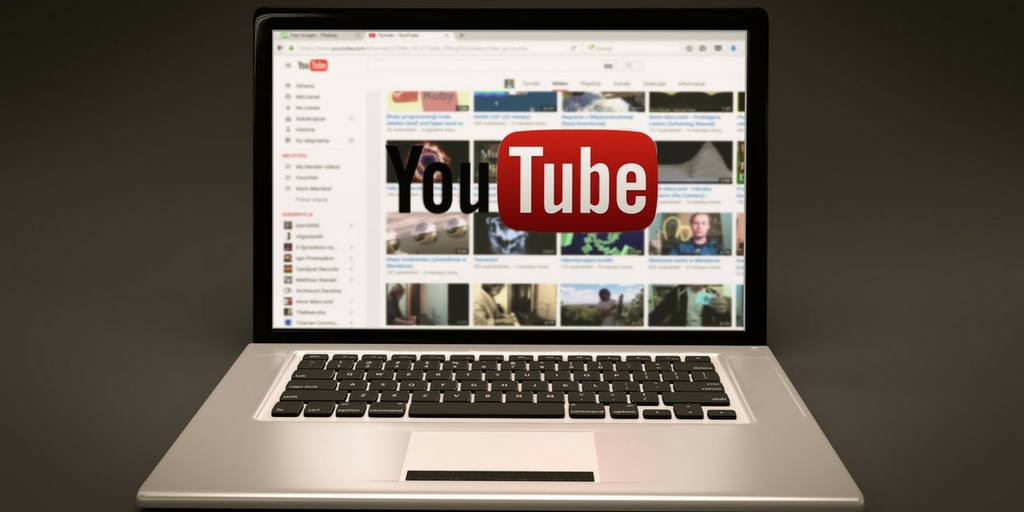
by Fronetics | May 2, 2017 | Blog, Content Marketing, Marketing, Social Media
YouTube creators focus on audience engagement, as opposed to branding, which helps them organically grow an authentic loyal following.
I recently watched a video from Truly Social President and Founder Tara Hunt about the genius of YouTube creators. She offers truly valuable insight into why people with little technology and resources have been more successful in growing a loyal audience with video than corporate campaigns with all the money and creativity in the world.
Perhaps it’s worth saying first: Yes, video can work for the supply chain. And YouTube, in particular, can be very worthwhile as part of your larger social marketing strategy. The decade-old video platform has over 1.3 billion users. 1.3 BILLION! And that’s not all: Users watch over 5 billion videos on YouTube every single day, and upload 300 hours of video every minute.
This presents a huge opportunity for your company to reach prospects in a new way. It also means that your videos really need to stand out to make an impact and avoid getting lost in the shuffle. After all, approximately 20% of people who start a video will leave after the first 10 seconds.
So how are creators attracting viewers while corporate brands aren’t?
5 ways creators are out-YouTubing brands
1. Consistency
Creators know the success behind their YouTube channels is a constant stream of content. This be can new content or simply responding to their followers, but they are active every day, around the clock. Brands tend to spend a lot of time and energy on content but are inconsistent in their posting, often abandoning their YouTube channels for days or weeks at a time. Their followers become bored with their lack of attention and move on.
2. Community
The foundation of YouTube — and most social media platforms, actually — is community and the resulting two-way dialogue between creators and their followers. The intent of a creator’s video is to engage their audience and build a relationship that is beneficial to both parties. On the other hand, brands tend to be overly focused on the attention their content stirs up, the “buzz” they are able to draw, neglecting the important process of creating and nurturing a relationship with their followers.
3. Interaction
Companies often focus on pushing their “messaging” on one (or just a few) social media platform(s). They spend an enormous amount of time and money perfecting content that reflects this messaging, hoping their followers will engage with it.
Contrarily, YouTube creators focus on interaction. They interact on multiple platforms, reaching out to their audience and taking full advantage of every opportunity to connect with their followers. What’s more, successful YouTubers don’t merely expect engagement — they ask for it. They promote hashtags, solicit video responses from viewers, and encourage feedback via social media interactions. Calls-to-action can stimulate subscriptions, shares and cross-pollination with other platforms.
4. Connection
Gone are the days of expensive and lengthy productions. Creators have captivated their audiences by creating organic, raw material that focuses on the emotional connect. The polished and professional content that brands create are void of vulnerability and lack the connection today’s followers are seeking.
5. Collaboration
Creators root for one another; they follow one another; they promote one another. YouTube creators seek the opportunity to expand their audience by collaborating with other creators who focus on the same topics and interests. Through the power of collaboration, creators expand the exposure of their content to different audiences, gaining subscribers and views.
Brands see other brands as competition. In a time when audiences prefer engagement and social awareness, this competitive attitude hurts brands’ likability and ultimately diminishes their viewership.
If companies were to focus more on audience engagement in these ways, they would have a better chance at mimicking the wild success of YouTube creators who have amassed a loyal following.
Related posts:

by Fronetics | Apr 11, 2017 | Blog, Content Marketing, Marketing, Social Media, Supply Chain
Create videos that provide answers and convey your mission, and viewers will come.
I know what you’re thinking: Videos are a great marketing tactic for certain niches, but not the supply chain. Who would want to watch my videos? What would I even make a video about?
Here’s the thing. Video is the most popular form of content being consumed online. As such, YouTube has become the second largest search engine in the world, with more than one billion users conducting over 3 billion searches per month. And YouTube isn’t just for funny cats and cover artists anymore. Businesses are using the video-sharing website and social media platform to engage customers and prospects.
Why? YouTube reaches more adults ages 18-34 in the U.S. than any cable network. Users browse the platform for entertainment purposes, but also for tips, information, and ideas. And anywhere people are seeking solutions, businesses should be providing answers.
Provide answers with video
Your first tendency when creating video content might be to promote your products. But if people wanted to watch commercials, they’d turn on the TV.
Instead, ask yourself: What are your customers’ pain points? What expertise and information do you have that is valuable to them? What industry topics interest you most, or what do you like best about working in your field?
YouTube has proven that ordinary people demonstrating and discussing their interests is of great value to a wide range of people. Consider formerly starving artist Leonardo Pereznieto, for example.
After struggling to make ends meet by selling his art, Perznieto began his YouTube channel Fine Art-Tips. Initially the goal was to make his drawings and sketches accessible to a wider audience. It was pretty unsuccessful.
Then Pereznieto began uploading sketching demonstrations to his channel, describing exactly what he was doing or how to get a certain effect. Fine Art-Tips grew like wildfire. To date, he has over 780,000 subscribers and more than two million views monthly. His step-by-step tutorial on how to draw a water drop has nearly 9 million views alone.
Aside from plenty of ad revenue to cover his living expenses, Pereznieto’s YouTube celebrity has advanced his reputation — and success — as an artist. His story is a testament to the power of informational video content in brand building.
Convey your mission
Video is a highly visual way to engage your audience. The combination of images, music, and narration can provoke emotion unlike any other media form. This makes it an ideal way to convey what you stand for — be it a safer workplace, higher quality components, or green living.
Chipotle’s 2013 integrity campaign offers a great example. The fast food chain partnered with Moonbot Studios to produce a video, The Scarecrow, which brought consumer awareness to issues within the food industry. Now with over 17.8 million views, the video has helped demonstrate Chipotle’s commitment to anti-factory farming and wholesome, sustainable food.
Videos are an excellent way to engage and enlighten customers and prospects without being overly promotional. Over one billion people are seeking answers and joining causes on YouTube — will your business create the content they’re looking for?
Related posts:








